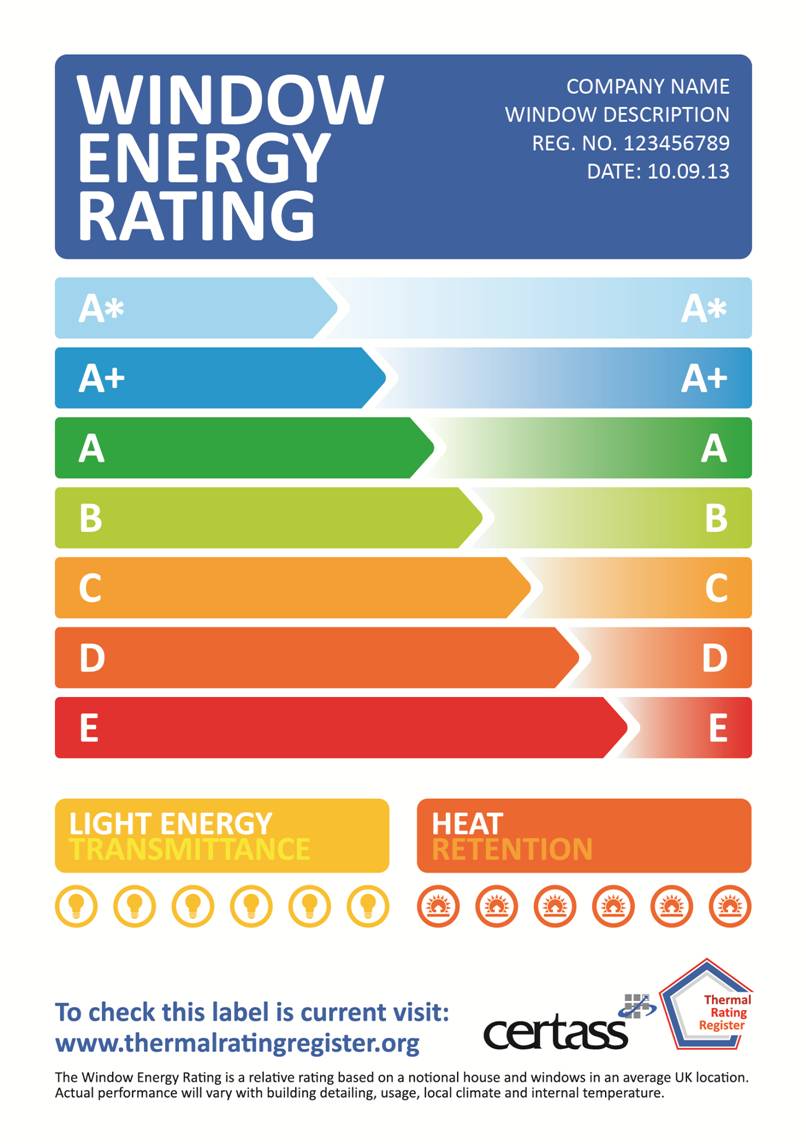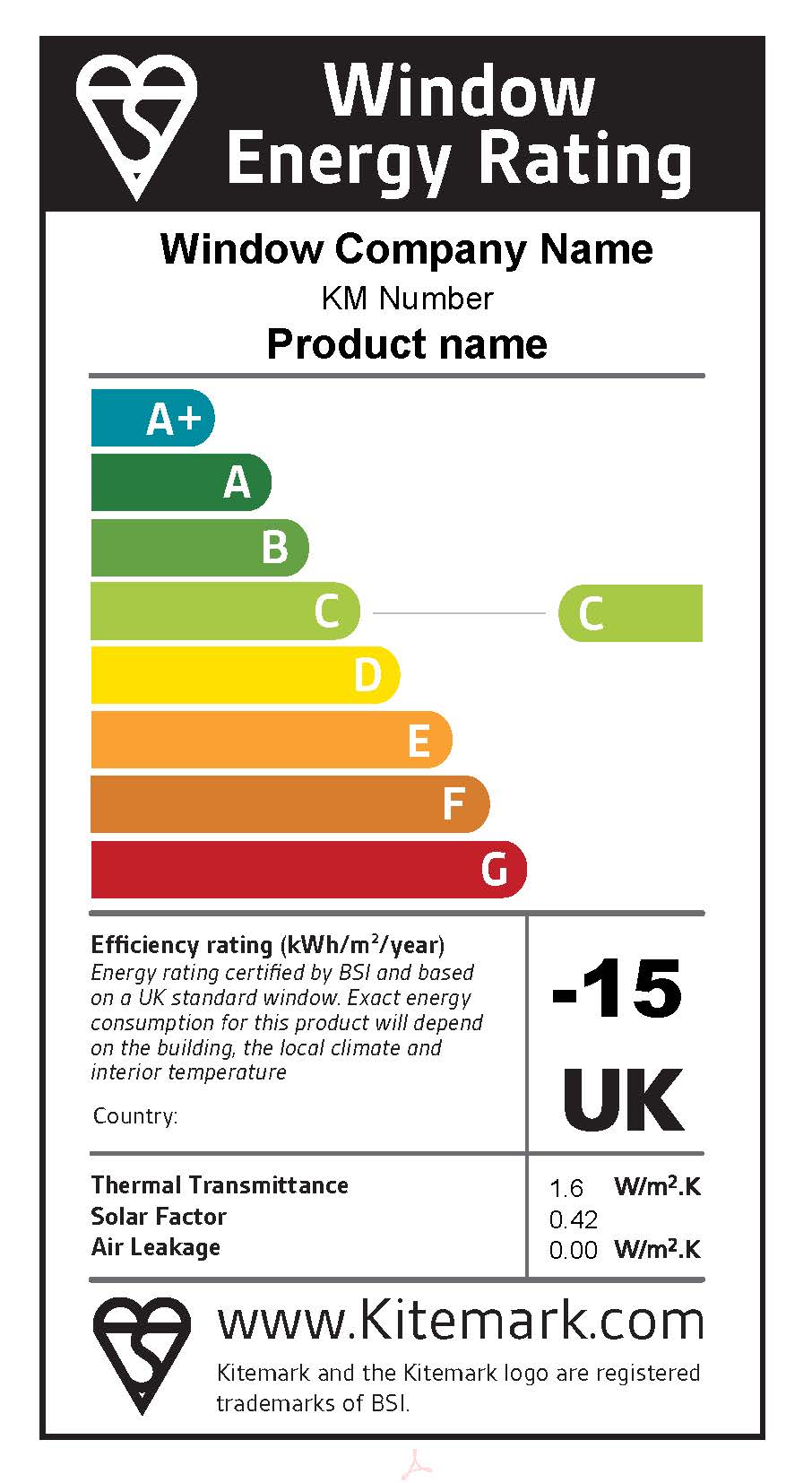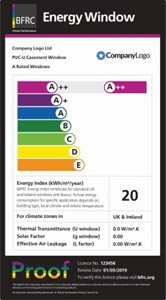Window Energy Ratings
The Window Energy Rating (WER) tells you how energy-efficient your windows are. The rating system is based on a scale of E to A++, with A++ windows being the most energy-efficient. The scheme is similar to those seen on household appliances, white goods and light bulbs.
Benefits of installing energy rated windows:
- Reassurance of certified scheme approval of the windows
- Improves the energy-efficiency of your home, reducing the amount of energy you use and helping you to save money on your heating bills
- Significantly more effective than existing single glazing or standard double glazing
- Energy Rated Windows are manufactured to European quality standards and meet the requirements for building regulations concerning energy efficiency of homes
- Since October 2010 legislation demands that windows have a minimum Window Energy Rating of band C
- Available from window installers countrywide in a range of frame types
Choosing windows incorporating a low-e glass such as a glass from the Pilkington K Glass™ or Pilkington Optitherm™ ranges helps to prevent heat from escaping through the windows, reflecting it back into your home. These energy saving glass products may be incorporated into double glazing unit such as Pilkington energiKare™ units are available countrywide and help achieve the highest levels of Window Energy Rating in almost any frame type.
The labels below are typical of the labels that you should see on your windows. They are supported by registered bodies which audit the window installers;
|

|
 |
 |
|
Certass Thermal Rating
Register Scheme
Website: www.certass.co.uk
Tel. No. 0845 838 8580
|
BSI Kitemark Scheme
for WER
Website: www.bsigroup.com
Tel. No. 0845 076 5602
|
British Fenestration Rating Council WER Scheme
Website: www.bfrc.org
Tel. No. 020 7403 9200
|
Window Energy Ratings were originally launched in March 2004 by the British Fenestration Rating Council (BFRC), an independent government-supported body established to develop and administer a system of Window Energy Ratings in the UK. The BFRC is run by the Glass & Glazing Federation (GGF) the trade body representing many window companies. Visit the GGF website www.ggf.org.uk for more information.
Since then both BSI and Certass have set up similar schemes and window companies can gain approval and register with any of these.
What is a Window Energy Rating?
A window's rating is determined by a formula which takes into account the total solar heat transmittance, the amount of the sun's heat which can pass through the glass (usually referred to as g-value); the U-value of the whole window (frame and glass combined), how well the window keeps the heat in your home; and the air infiltration through the window seals. To make the Rating standard across all products, a standard window size and configuration is used. The resulting value is then placed into a band on the scale E-A++, with A++ rated windows being the most energy-efficient. This makes the system of rating windows consistent with other products which have energy performance labels such as those that will be familiar on washing machines, light bulbs and refrigerators.
Who gets a Window Energy Rating (WER)?
A Window Energy Rating and label apply to a whole window (ie the frame and the glass). They do not apply to either the frame or the system or the glass individually. Therefore it is at the point at which all these components come together to produce a whole window that the Rating and label are obtained. Usually it would therefore be the window installer's product which is rated, although in the case of a factory-glazed window it could be the window manufacturer's product. Ask your window installer for more information on this.